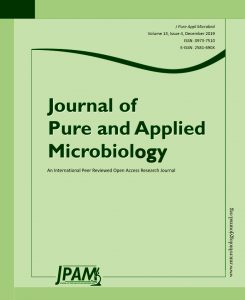A combination of chemicals including povidone-iodine, chlorhexidine gluconate, ethanol, and methanol were used to remove Bacillus thuringiensis endospores from surgical tools. This study included two steps: the first one was conducted using four increasing concentrations of each compound. The best chemical concentration for a single agent was 7.5% povidone-iodine with only 3 colony-forming units (CFU) produced after treatment, 5% chlorhexidine treatment resulted in 12 CFU, 70% ethanol yielded 9 CFU, and 90% methanol resulted in 20 CFU. The second step included the following (v/v) combinations: 90% methanol + 70% ethanol, 90% methanol + 5% chlorhexidine, and 7.5% iodine + 70% ethanol + 5% chlorhexidine. The latter combination resulted in 0 CFU and therefore, sterilization was achieved. The combination 7.5% iodine + 5% chlorhexidine resulted in 1 CFU, 7.5 % iodine + 90% methanol in 4 CFU, 7.5% iodine + 70% ethanol yielded 6 CFU, and the combination 5% chlorhexidine + 90% methanol resulted in 9 CFU. The control treatment yielded about 300 CFU. To confirm results, a vegetative growth of Pseudomonas aeruginosa, Klebsiella pneumoniae, Staphylococcus aureus, and Enterococcus faecalis were subjected to the same disinfection procedure and no bacterial growth were obtained for all the disinfectant combinations. Sterilization is defined as the process aimed at destroying or eliminating all kind of microbes and it is indispensable in health care settings.
Endospore, Bacillus thuringiensis, Surgical tools, disinfectants, Full sterilization.
© The Author(s) 2019. Open Access. This article is distributed under the terms of the Creative Commons Attribution 4.0 International License which permits unrestricted use, sharing, distribution, and reproduction in any medium, provided you give appropriate credit to the original author(s) and the source, provide a link to the Creative Commons license, and indicate if changes were made.


